#collieries of wales
Text
Pretty random post, but recently I visited the South Wales Miners Museum after a relative booked a tour for us. It was, to say the least, extremely interesting and even enlightening. Welsh heritage is something that I’ve grown to love dearly alongside this overall beautiful country. For the colliery side, It was never something I would’ve thought I’d ever be interested in, especially to the point I currently am.
I can’t say it ‘broke my heart’ or anything somber when I heard that the experience wasn’t backed by funding from the council or Welsh Government (such as Big Pit), but it did frustrate me somewhat, knowing how intimate this tour was - even given by those who’re ex-coal miners. A large part of the experience was sharing the understanding of community that coal miners and local townsfolk had with one another, with so much more detail than I could describe (You’d have to see it for yourself). So, as much frustration that I have with the idea of no financial support from the Museum of Wales or what have you, I have so much more respect for how humble it truly is, and thats not to say it’s fuelled by pity. It is GENUINELY so impressive, so immersive and so educational.
I know what I’m saying probably won’t have much of an effect, if any at all. But I just wanted to share. Cause goodness gracious. It’s truly an amazing place.
#wales#not art#cymru#port talbot#neath#south wales#welsh#colliery#coal mining#welsh industry#heritage#welsh heritage#south wales miners museum
6 notes
·
View notes
Text
The 23rd of June marks the 130th anniversary of the Albion disaster in Cilfynydd. Claiming the lives of 290 men and boys, it is one of the largest colliery disasters in Welsh history.
At the time of the disaster work was underway to sink the Dowlais Pit at Aberdare Junction (Abercynon). In anticiption of this, Abercynon was already growing rapidly. A number of men in the area were employed in…

View On WordPress
#Abercynon#Albion disaster#Cilfynydd#Coal#Colliery#History#Local History#Mining Disaster#South Wales
0 notes
Text



British Royal Family - The Prince of Wales meets with Ruby McBurney, a surviving child of a Gresford Disaster victim, during a visit to the Gresford Colliery Disaster memorial as he marks St. David's Day in Wrexham, Wales. | March 01, 2024
207 notes
·
View notes
Text


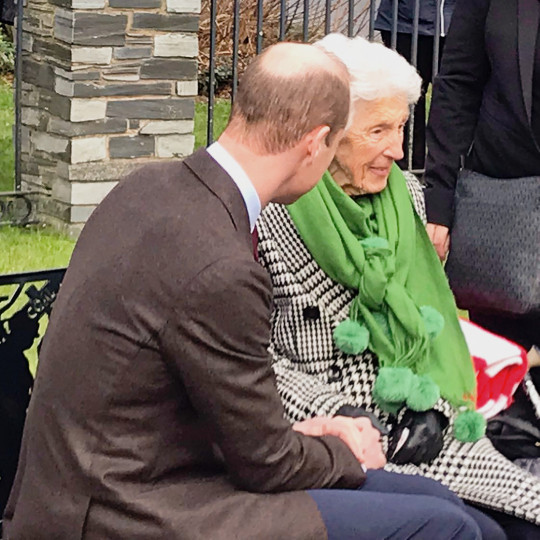
The Prince of Wales meets meets Ruby McBurney daughter of one of the victims of the Gresford disaster at the Gresford Colliery Disaster Memorial|| 1 MARCH 2024
#british royal family#british royals#royalty#royals#brf#royal#british royalty#prince of wales#the prince of wales#prince william#william wales#StDavidsDay24#royaltyedit#my edit#1032024#StDavidsDay24.3
85 notes
·
View notes
Text

E. Prosser Rhys won the Crown in Pontypool National Eisteddfod with 'Atgof' in 1924.
Influential in his life as a poet, editor, journalist and publisher, Prosser Rhys is remembered today for winning the Crown in the National Eisteddfod of Wales in 1924. As influential as his winning poem, ‘Atgof’ was, and continues to be, Prosser even more profoundly affected Welsh-language writing in his life than is remembered today.
Edward Prosser Rees was born on the 4th of March 1901 in Trefenter, Mynydd Bach in Ceredigion, and christened on the 9th of March at Capel Bethel. His father was a blacksmith, David Rees, and his mother was Elizabeth Rees. Prosser came from a family of blacksmiths, and they later moved to Morfa Du in Trefenter (after Prosser had moved away, in March 1918). Previously, they had lived in Llainffwlbert until 1900, where they had their previous six children.
Prosser Rhys attended Cofadail Primary School in Trefenter then Ardwyn Grammar School in Aberystwyth in 1914. Other writers, academics and politicians were educated here, who were known as 'Old Ardwynians'. His early academic success was then marred by ill health - he was diagnosed with Tuberculosis at a young age, in 1915, which affected him for the rest of his life, but immediately kept him home for the next 3 years of his life.
Still, his name started appearing in Welsh writing as early as 1916, with the poem ‘Y Fam a’i Baban’ (The Mam and her Baby) in Baner ac Amserau Cymru, where he was published as E. Prosser Rees (under the pseudonym/ffugenw Eiddwenfab) from Trefenter, Llangwyryfon, Ceredigion. In 1917, he wrote eloquent letters to ‘Y Darian,’ a radical Welsh-language paper, where he first wrote briefly about joining a patriotic union, and the Eisteddfod. The latter was fitting as he next appeared in Y Darian in 1918 for his early Eisteddfod wins, then in local Eisteddfodau, listed within the winners from Ceredigion. He then appeared several times in Y Darian as a part of ‘Aelwyd y Beirdd,’ where he’s described as a young poet with great potential, at only 17, the brother of Reverend Wyre Rees.
Clearly, Prosser wrote, competed and performed his poetry quite a lot as a teenager. One of his early poems appears in ‘Cymru,’ a monthly Welsh-language journal founded by O.M. Edwards in 1891. It was in 1919 that ‘Canu’r Merched’ by E. Prosser Rhys appeared in the journal ‘Cymru’. This is the earliest (that I found) of his poetry appearing published under this name. Note that there are occasionally mentions of ‘Prosser Rees,’ his birth name, as well. As Prosser Rees, he also published a poem in 1917 in The Cambrian News and Merionethshire Standard in sympathy to Mr and Mrs Thomas Evans of Penbont, who lost their son, David Morgan, in France during the First World War.
Prosser worked as a clerk at Western Ocean Colliery in Nant-y-Moel, Ogmore Valley, before his community saw him coming back from the ‘sowth’ (south) as a journalist. He was at Nantymoel, apparently living with one of his brothers, John, who was a coal miner. He was still receiving treatment for tuberculosis and apparently then returned to this family in their new home in Morfa-Du. He then worked at the Liberal newspapers of the Welsh Gazette in Aberystwyth and Herald Cymraeg in Caernarfon in 1919 (where he worked with Morris T. Williams). He moved back to Aberystwyth in 1921 and became the editor of Baner ac Amserau Cymru in 1923, when they moved their offices from Denbigh to Aberystwyth.
In 1923, Prosser's poetry was first published in a book - Gwaed Ifanc with another poet J.T. Jones (John Tudor Jones). As the title suggests, they were proud of being the ‘new blood’ of Welsh poetry and writing, with Prosser then being 22 and J.T. Jones being 19 years old. There was certainly some backlash to that and the book was met with some controversy, also for their poetry being more sexual than older poets of the time. There was already a tradition of the new kind of Welsh writing, started by T H Parry-Williams’ win in the Eisteddfod in 1915 with ‘Y Ddinas,’ and Rhys was aware of these new ideas of challenging Welsh writing, the Eisteddfod and therefore Welsh-language society, which he was inspired by and sought to be a part of - and succeeded. This was an attempt to challenge the writing of older poets, as well as bring attention to the newer crop of younger writers, the men who’d survived the First World War and demanded attention.
He of course especially challenged the status quo of the Eisteddfod when he won the Crown in 1924 in the Pontypool National Eisteddfod with his poem ‘Atgof’ (Memory - or also sometimes translated as Reminiscence). This long ‘pryddest’ poem, follows a ‘llanc synhwyrus’/‘sensible lad’s journey into exploring his sexuality, from seeing ‘Sex’ ruin his parents’ relationship, to exploring his sexuality with women, and then with a man as well (who was likely Morris T. Williams), while struggling against the morals and virtues of Welsh society and religion. The judges of the Eisteddfod were at odds, one finding it to be immoral and the others praising it.
Of course, when Prosser won, the reactions were scandalized and ‘Atgof’ became quite controversial, for its explicit discussions of sex and of course the same-sex part of the poem. It has since been called ‘homoerotic’ by many writers, while today may be seen more as a bisexual poem, or queer one. Mihangel Morgan, writing in Queer Wales, finds this to be a negative depiction of homosexuality and downplays the significance of ‘Atgof’ as a gay poem.
A’n cael ein hunain yn cofleidio ‘dynn;
A Rhyw yn ein gorthrymu; a’i fwynhau;
A phallu’n sydyn fel ar lan y llyn…
And finding ourselves in a tight embrace
With Sex overwhelming us; and enjoying it;
And suddenly stopping as above the lake…
These lines describe the same-sex interaction and indeed it doesn’t take up a large amount of the poem, but Mihangel Morgan’s disappointment seems to come from the poem not being homosexual enough. And indeed it isn’t, but reads as a bisexual poem that takes us through Rhys’s whole journey of realising and battling with his sexuality at this age. It still resonates with much of the LGBTQ+ community, especially when realising how explicit it was for 1924 (or it wouldn't have been so controversial), 40 years before the decriminalization of homosexuality, and its win in the Eisteddfod was well, well ahead of its time.
On the other hand, later on in Prosser’s life, it was suggested that he was so shocked by sodomy in the writing of someone else to not publish them. There is the possibility of Prosser’s viewpoints and own sexuality changing in his life, though this is merely speculation that Prosser was ‘shocked’ by writing of homosexuality. There are many possibilities here when it comes to Prosser’s own feelings and sexuality, but it is certain that they have had a great influence on LGBTQ+ writing and the community in Wales and particularly in Welsh.
‘Atgof’ and Prosser were also mentioned in US Time Magazine in 1924, adding to evidence of the influence and legacy of this poem. Internationally, we see links in the poems to the sexology and psychiatry of the time - the psychoanalyst Ernest Jones (and possibly abusive husband of the composer Morfydd Llwyn Owen) mentioned the poem in a letter to Sigmund Freud, though it’s unclear that either actually read the poem.
Caradog Pritchard wrote in his autobiography that as a friend of Prosser’s and Morris T. Williams’ that he believed the man Prosser wrote about was Morris Williams, and this has been accepted as likely the truth since then (though there were always rumours about this). Morris T. Williams was close to Prosser, when they were roommates in Twthil near Caernarfon, while working at 'Herald Cymraeg,' and they exchanged letters after which show their close relationship - this was before Morris married Kate Roberts and they together bought Gwasg Gee. All three remained close, being friends and remaining in the same social circles as poets, as well as in Welsh publishing. More recently, it has been theorized that Kate Roberts also was queer, based on her own personal writing, as well as her short stories which are about romantic relationships between women (such as 'Christmas' and 'The Treasure'). Morris T. Williams died in 1946, a year after Prosser Rhys, after a long struggle with alcoholism.
‘Atgof’ was published as a booklet, with a translation ‘Memory’ by Hywel Davies also published as a booklet. The poem reads less explicitly than the Welsh version, though it was praised at the time. It can be read here - though a modern English translation is definitely needed. 'Atgof' can also be read here.
In 1928, Prosser married Mary Prudence Hughes in Aberystwyth, which was when both he and she took the surname ‘Rhys’. They had one daughter, Eiddwen Rhys. He founded Gwasg Aberystwyth also in 1928 and began publishing books, with Gwasg Aberystwyth growing significantly in years to come.
As editor of Baner ac Amserau Cymru, Prosser encouraged more poets to write and publish their work. Rhys founded Y Clwb Llyfrau Cymraeg/The Welsh Books Club in 1937. This was a subscription of Welsh books, where readers would receive 4 books a year for half a crown, and which published 45 volumes up until 1945. As successful as it was under Prosser, after his death, it was decided that there were not enough Welsh-language writers to continue it.

(Executive committee of 'Plaid Genedlaethol Cymru,' 1927- Lewis Valentine, Ambrose Bebb, D. J. Williams, Mai Roberts, Saunders Lewis, Kate Roberts, H. R. Jones, Prosser Rhys.)
Prosser Rhys was a founding member of Plaid Cymru, founded in 1925. He was also the editor of ‘Y Ddraig Goch’ with Saunders Lewis and Iorwerth C. Peate, which Prosser also helped to form with H. R. Jones, though he was initially opposed to the idea due to lack of funds. However, Prosser became vocally opposed to Saunders Lewis’ right wing views. He wrote in Y Faner that many of Plaid Cymru’s members had come from the Labour party or Liberal party, or were radicals who came from no political party, where none were supportive of the views appearing in the Daily Mail, implying that Saunders Lewis’ views were too close to the matter, but that most Plaid Cymru supporters were personally too loyal to voice their concerns over this. The expulsion of Prosser from the party was discussed and suggested but Saunders Lewis opposed this.
Following his many successes, Prosser and his family moved to 33 North Parade, Aberystwyth, where he lived until his death.

After his health had deteriorated again from 1942, Prosser died in 1945 - at the age of 43, and less than a month before his 44th birthday. He is buried at Llanbadarn Fawr Cemetery, with his grave quoting T. Gwynn Jones: “Gwyrodd êfo î’r drugaredd fawr, Ni wyr namyn Duw ddirgelwch ei wên.” Here Mary Prudence Rhys, his wife, is also buried, who died in 1991, at the age of 87. They are also buried with William Dewi Morris Jones, who died in 1983, aged 56. Rhys’s death was certainly a loss to Welsh publishing and writing.
Gwasg Aberystwyth was bought by J. D. Lewis & Sons from Llandysul after Prosser’s death, the founder of Gwasg Gomer, who continued the Welsh Books Club and took over publishing of the club’s books until 1952. This, however, did follow a legal disagreement between Mary Prudence Rhys and Morris T. Williams, who was supposed to get the first offer and chance at refusal for Gwasg Aberystwyth, according to legal documents that Prosser and Morrisagreed upon, which Morris Williams did not feel like he had gotten.
Cerddi Prosser Rhys was published in 1950 by Gwasg Gee, Morris’s first collection entirely of his own poems - published 5 years after his death. Edited by J.M. Edwards, a fellow poet who competed in Eisteddfodau and was from a similar area to Rhys, Edwards also writes the introduction of the poetry collection. He notes that he decided that 4 years after Prosser’s death was enough time to finally publish a whole collection of Prosser’s best poems (the introduction was written in July, 1949, with the book published in February, 1950.) He writes that his previous poetry collection, in ‘Gwaed Ifanc’, was ‘a volume that attracted a lot of attention and also brought a new, daring note to the world of Welsh poetry of the period, something that was urgently needed.’ His memories of Prosser while growing up show he was a well-known poet even in his youth, who Edwards and others in his own school had heard of before meeting, who was known for competing and finding success in many local Eisteddfodau around Wales.
Of his poetry found in Cerddi Prosser Rhys, Edwards notes that ‘Y Gof’ (The Memory) is a tribute to his parents and his early life in rural Wales. His two sonnets he most praises are ‘Y Pechadur’ (The Sinner) and ‘Duw Mudan’ (Mute God). Of ‘Atgof,’ Edwards significantly notes that it was "a bold poem that created a lot of excitement and was praised by some but damned by others. The saddest feature of the whole event was that it reflects an attitude of thought in Wales which is too ready to judge the values of the world of the arts by the wrong standards." The introduction finishes by repeating what many others have said about the premature loss of Prosser to the world of Welsh writing and publishing. Edwards also hoped that there would also be a collection of Prosser’s prose, which unfortunately has not yet come to be.
‘Mab ei Fam’ (His Mother's Son) is to "M.T.W," likely Morris T. Williams - similarly to Strancio, which was translated by Mihangel Morgan as ‘Fooling About,’ which is to: ‘I gyfaill annwyl a fu’n cyd-letya â mi’ (To a dear friend who lodged with me)
Do, bûm yn flin. Ond weithian gwybydd di
Fod Fflam yn llosgi ynof, ac aml dro
Yn llamu ar draws fy nghorff materol i,
A’m hysu hyd fy nghyrru i maes o’m co’,
A strancio a wnaf eto rhag fy ffawd
Nes torro’r Fflam ei ffordd o’i charchar cnawd.
Yes, I was angry. But sometimes you must know
That a Flame burned within me, and often
Sprang from my material body
Plaguing me until it drove me mad
And I would taunt my fate
Until the Flame broke free of its prison of flesh.
-Mostly translated by Mihangel Morgan.
As with ‘Atgof,’ Mihanel Morgan downplays Strancio by stating it to be cryptic and guarded - while I'd argue that the confession of his feelings towards a man in the 1920s is explicit for its time, especially following on from the Victorian poetry that was popular before the ‘New blood’. While Mihangel Morgan says it is ‘assumed’ to be about Morris T. Williams, the dedication at the start of the poem is clear enough, at least historically, to Morris T. Williams, especially when a previous poem also is dedicated to him.
It wasn’t until 1980 that Prosser Rhys was celebrated with a book about his life, by Rhisiart Hincks. T. Robin Chapman wrote in Y Traethodydd in 2006 that Hincks probably knew of the nature of Rhys’s relationship with Morris T. Williams yet it was omitted, from the only whole biography of Prosser Rhys. This is a sign of the times in which it was written and published but shows the need now to write biographies of Rhys that include what was previously excluded, his queer identity. Hincks mentions how Williams quickly became Prosser's best friend ('ei gyfaill pennaf') when they met in Caernarfon, that they moved together to 15 Eleanor Street and that it was Prosser who introduced Williams to literature. ‘Cyfeillgarwch clos’. He also mentions that such closeness led to spats, once when they fought all night, which does show the intensity of their relationship. Perhaps, this subtext Hincks hoped to be understood by the audience of the time. Of ‘Atgof,’ Hincks notes that Prosser had previously expressed that there was a lack of sex in Welsh in recent poetry, which he blamed on the chapel. This biography remains the most detailed on Prosser’s life.
A monument on Mynydd Bach, overlooking Llyn Eiddwen near to Trefenter, where Prosser was born and lived in his childhood, was unveiled in 1992, during the National Eisteddfod in Aberystwyth. Including Rhys, the monument, ‘Cofeb i Feirdd y Mynydd Bach’ celebrates 4 poets from the local area. J.M. Edwards from Llanrhystud also won the Crown in the National Eisteddfod, in 1937, 1941 and in 1944, and wrote the introduction to Cerddi Prosser Rhys. All 4 of the poets named on the plaque of the monument were successful in the Eisteddfod. B. T. Hopkins (Benjamin Thomas Hopkins) was a successful poet from Ceredigion, who lived and farmed on Mynydd Bach. T Hughes Jones (Thomas Hughes Jones) was a Welsh poet and writer from Ceredigion who won a medal in the National Eisteddfod of 1940 for a short story, ‘Sgweier Hafila,’ which was partly judged by Kate Roberts.
Interest in Prosser, his life and career, has been renewed by research into Welsh LGBTQ+ history and writing. Notably, in 1998, a historical docudrama called ‘Atgof’ aired on S4C, directed by Ceri Sherlock, which depicted Prosser writing the poem and his relationship with Morris T. Williams, which was represented as a sexual and romantic one. There was controversy around the film, similarly to 'Atgof' the poem, with some questioning how they depicted the relationship (with some speculated, fictional details) and some also questioning whether it should be depicted or speculated about at all. Despite the discourse, Prosser Rhys had already become an inspiration to the Welsh LGBTQ+ community.
In 2019, the show ‘Corn Gwlad’ was performed at the National Eisteddfod in Llanrwst, created by Seiriol Davies, which celebrated Prosser’s win at the Eisteddfod and depicted his feelings towards Morris T. Williams. It was then a work-in-progress show, with comedy and music, and part of the ‘Mas ar y Maes’ programme of events at the National Eisteddfod, which are especially for the LGBTQ+ community, or which may be relevant to the LGBTQ+ community. Prosser was also featured in ‘Mas ar y Maes’ events with ‘Cariad yw Cariad,’ and is of course heavily featured in the 2024 National Eisteddfod in Pontypridd, on the centenary of Prosser Rhys winning the Crown with 'Atgof.' 'Atgof' was also the theme of the poems submitted to the 'Coron' - which was won by Gwynfor Dafydd.
The lasting legacy of Prosser Rhys is to be a significant voice of this community from 20th century Wales, and an icon especially for Welsh language LGBTQ+ people, queer men and bisexual people. This is what has significantly brought Prosser Rhys back into the public eye in the 1990s, with the film Atgof, and in the 2010s with LGBTQ+ History Month, and in the 2020s around the 100th anniversary of his Eisteddfod Crown winning with ‘Atgof’. Prosser also had a significant impact in Welsh publishing, Welsh society, in his article writings, in politics. Prosser Rhys was a fascinating, complicated person, a passionate advocate for Welsh poetry, writing and publishing and is a hero of the communities to which he belonged, including the local community in Ceredigion and West Wales.
#edward prosser rhys#prosser rhys#e. prosser rhys#eisteddfod#national eisteddfod#lgbtqia#queer history#welsh history#history#wales#bisexual history#gay history#queer welsh history#this is a very long blog - this can't really be called a blog#Welsh version incoming soonish#posting this in the middle of the night bc I go to the Eisteddfod tomorrow
30 notes
·
View notes
Text
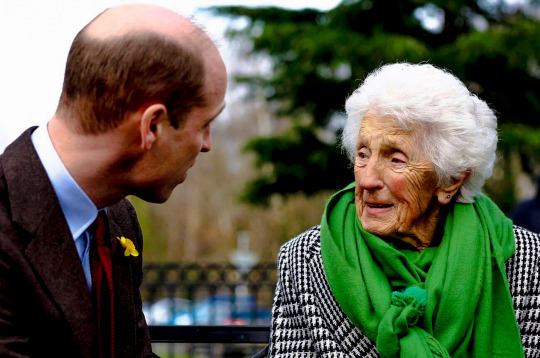
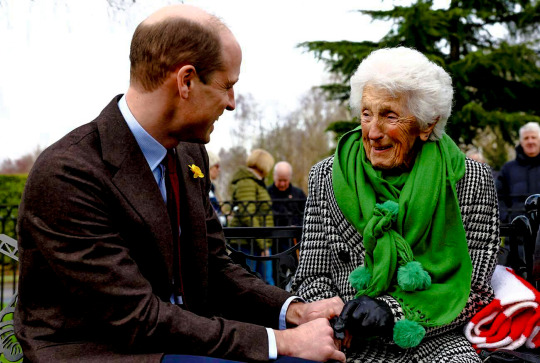
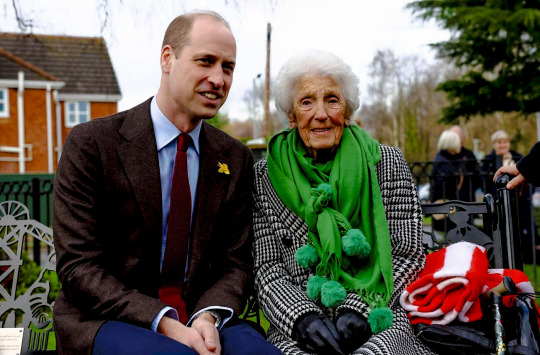
The Prince of Wales visits the Gresford Colliery Disaster memorial to mark St David's Day, in Wrexham, Wales -March 1st 2024.
#prince william#prince of wales#british royal family#england#2024#march 2024#st david's day#st david's day 2024#wales#wales 2024#the wales#my edit
50 notes
·
View notes
Text

King And Queen Pet Pit Ponies At Windsor Show. July 05, 1939.
‘The King and Queen laughing and chatting with a pit boy as they make friends with his pony. The King and Queen petted 87 pit poines and talked with their mastors, brought from different collieries in Britain and South Wales, during their visit to the Centenary Show of the Royal Agricultural Show at Windsor Great Park, Borkshire. The show of the pit poines and horses is the first of its kind.’
34 notes
·
View notes
Text

Norton's Birth Year and some facts about his age at the time of the DeRoss tragedy
Alice: age 6 when her parents die in the tragedy
Year of the tragedy: 1887, based on the Official Artbook
Alice is 21 in the final game, so the final game was in 1902.
Norton is 28 in the final game.
-> Norton was born in 1874 and age 12 on the day of the tragedy in 1887.

Alice's birthday: September 13.
If Alice is 6 during the tragedy, and the tragedy was in 1887, that tragedy had to have happened between September 13, 1887 and December 31, 1887.
Norton's birthday is March 19.
-> Thus why Norton we know was 12 at the time of the tragedy.
12 was the minimum age allowed for boys to work underground in coal mines (Metalliferous Mines Regulation Act, 1872). Legislation in 1860 set a requirement for a minimum level of formal education before children were permitted to work. It made it so 10 and 11 year old boys could only be employed in British collieries if they had earned an educational certificate or if they attended school at least 2 days a week for at least 3 hours per day. (Females were prohibited by an Act in 1842.)
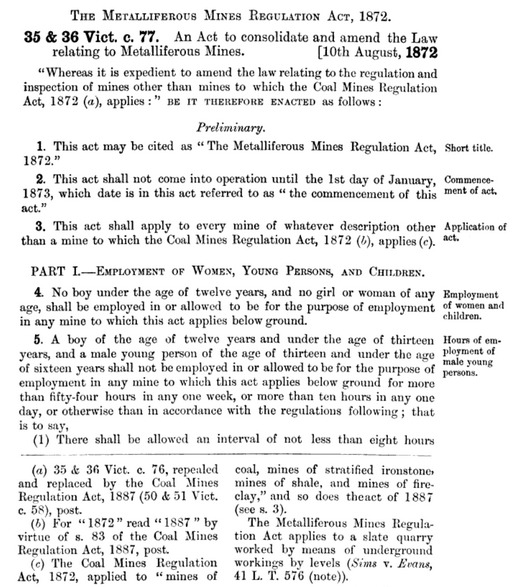

The Education Act of 1870, which applied to England and Wales, made attendance at school compulsory for children between the ages of 5 and 10. For Scotland, an Act was introduced in 1872 that made school compulsory for children between 5 and 13. There were exceptions to these 2 acts, such as for children engaged in apprenticeships or those being appropriately home schooled.
The 1872 Act also made it so boys between 12 and 16 couldn’t work more than 54 hours in 1 week or 10 hours in 1 day. It also required between 8 and 12 hours between periods of employment (defined as starting when they leave the surface and ending when they return to the surface).
It did have provisions for 10 year olds to labor part time where seams were especially thin. At the same time, surface work was regulated, a minimum age of 12 being required for both boys and girls for full-time employment (and 10 years for part-time work).
Norton says in his 2nd letter “Over the last 20 years, I lived like a rat in the gutter”. Based on what we know, he was likely restricted to work above ground until at least age 12, and even afterwards had restrictions on his hours and what he could do and such until at least age 16.

In which case, this comment, based on the context, may have just been referring to him growing up poor. It may imply his father died when he was 8, at which point life became very hard for him, especially as Norton’s mother is never referenced. As I discussed in a previous post, with how rare divorce was, Norton’s mother is more likely to be dead.

#idv#identity v#norton campbell#prospector#Fool's Gold#fools gold#idv norton#identity v norton#idv prospector#identity v prospector#idv fools gold#identity v fools gold#idv fool's gold#identity v fool's gold#sirenjose analyses and theories
117 notes
·
View notes
Text

Ray Reardon
One of the greatest British snooker players who won the world championship six times
Ray Reardon, who has died aged 91 from cancer, was snooker’s world champion six times in the 1970s, the decade in which the game was changing from subterranean folk sport into a TV attraction.
Always immaculately dressed, a highly popular and genial ambassador for the game, ever adept at engaging a crowd, he remains the oldest champion and, on the strength of his 18-15 defeat by Alex Higgins at the age of 49 in 1982, its oldest finalist. After his wins in 1970, 1973-76 and 1978 he was still good enough to reach the 1985 semi-finals, when he was 52, before Steve Davis, the dominant figure of the 80s, trounced him 16-5.
As a player, he transformed himself from brilliant young potter into supreme tactician. In later life his deep knowledge of the game was utilised by Ronnie O’Sullivan, who acknowledged him as a significant factor in capturing the 2004 world title.
Commercially, Reardon’s peak came too early; prize money of £7,500 for winning the 1978 world title, £12,500 for reaching the 1982 final and £20,000 as a 1985 semi-finalist looks like petty cash by today’s standards, although it did not seem too bad in those days, particularly as the snooker revival had started from a low base.
Reardon was born into a snooker family, to Cynthia and Ben Reardon, in Tredegar, south Wales, where he attended Georgetown secondary school. His father, a coalminer, played in the local league for the Miners’ Institute, as did his uncles. When Ray was 14, and after a brief stint as a motor mechanic, he became a miner himself. On his 17th birthday, in 1949, he made his first century break in the morning and won the first of six consecutive Welsh amateur titles in the evening.
In 1956, the family moved to Stoke-on-Trent, Staffordshire, in search of better job prospects. That same year he looked likely to become English amateur champion when he held a 7-3 overnight lead against Tommy Gordon in the final at Burroughes Hall in London, but his tip flew off with his first shot the next day, perhaps through the agency of a betting gang. Forced to play with an unfamiliar cue in those pre-superglue days, he lost 11-9.
Eleven years in the pits ended in 1957 after he was buried in a roof fall at the Florence Colliery in Stoke, unable to move a muscle for three hours. “I had to breathe through my nose,” he was to recall, “because if I opened my mouth I’d suffocate to death on the dust.”
With iron self-control he kept calm by imagining he was playing endless games of marbles with his eight-year-old brother, Ron.
After that he became a police officer in Stoke, earning a commendation for bravery for disarming a man who was brandishing a shotgun, and another for crawling across a frosty rooftop to drop through a skylight on to an unsuspecting burglar.
In 1964 he achieved his ambition of winning the English amateur championship, beating John Spencer, himself to become a three times world champion, 11-8 in the final at the Central Hall, Birmingham.
A professional career was hardly worth contemplating at the time, as the World Snooker Championship had lain dormant from 1957 until 1964. But after selection for an amateur tour to South Africa he was offered a return visit as a professional and in 1967 took the plunge at the age of 35, in time for the revival of the championship tournament and the advent of BBC Two’s Pot Black. This was a half-hour, one-frame competition that he won twice (1969 and 1979) and that introduced the game and its leading players to new audiences.
Then the world championship ran throughout an entire season of week-long matches, and in 1970 Reardon became champion for the first time by beating John Pulman 37-33 at the Victoria Hall in London. At the City Exhibition Halls in Manchester in 1973, the first time the championship was telescoped into a fortnight, he recovered from 19-12 down to beat Spencer 23-22 in the semi-finals and from 7-0 down defeated Australia’s Eddie Charlton 38-32 to regain the title.
He retained it a year later comparatively uneventfully, but in the 1975 final in Melbourne, Australia, had to make an epic recovery from 29-23 adrift to beat Charlton 31-30. He disposed of the mercurial Higgins 27-16 in the 1976 final at Wythenshawe Forum in Manchester, and in 1978 became champion for the last time at the age of 45 with his 25-18 victory over the South African left-hander Perrie Mans at the Crucible theatre in Sheffield.
He retired to Brixham, Devon, in 1991, later moving to Torquay, but having kept up with contacts on the club scene that had given him his staple income in his early professional days, he continued with exhibitions as well as his summer tours of Pontins holiday camps, a routine he much preferred to the unpaid slog of qualifying competitions.
He is survived by his second wife, Carol Covington, whom he married in 1987, and by two children, Darren and Melanie, from his first marriage, to Susan Carter, in 1959, which ended in divorce.
🔔 Ray (Raymond) Reardon, snooker player, born 8 October 1932; died 19 July 2024
Daily inspiration. Discover more photos at Just for Books…?
4 notes
·
View notes
Photo

'Wales' (Miner), 1953. Robert Frank. Gelatin silver print.
The Senghenydd colliery disaster, also known as the Senghenydd explosion, 14 October 1913. (Welsh: Tanchwa Senghennydd), occurred at the Universal Colliery in Senghenydd. The explosion, which killed 439 miners and a rescuer, is the worst mining accident in the United Kingdom..None of the mine owners or share holders were injured.
#photography#Black and White#miner#workers#wales#history#photographie#foto#fotografia#fotografie#1950s#capitalism#culture
96 notes
·
View notes
Text
"Though many women reflected on the permanent subjective changes they had undergone—recalling times of joy and elation, expressing no regret for having participated in the strike, and declaring how much they hoped to continue with political activism in some form—this did not mean they found it easy to carry on fighting straight away. These contradictory feelings are captured in reflections by Dorothy Phillips, who set up a soup kitchen for miners at the Celynen Collieries’ Miners’ Institute in Newbridge, Wales. She separated the immediate emotions associated with the day the strike ended—“I haven’t spoken to one woman who didn’t tell me she cried on that day”—from transformative solidarity during the strike: “That sense of togetherness . . . is an experience I cannot forget.” The defeat disrupted a whole infrastructure and a set of routines that had sprung up to support the striking workers. The political roles and forms of support that were described as precipitating changes in subjectivity were material. Solidarity was a practice. Just as the strike had transformed the rhythms, routines, and relationships of people’s daily lives, so the emotions associated with defeat were not just a response to a loss located in the future but also to the loss of an existing context of struggle."
6 notes
·
View notes
Text



British Royal Family - The Prince of Wales meets with Ruby McBurney, a surviving child of a Gresford Disaster victim, during a visit to the Gresford Colliery Disaster memorial as he marks St. David's Day in Wrexham, Wales. (Photo by Molly Darlington) | March 01, 2024
#royaltyedit#theroyalsandi#prince of wales#ruby mcburney#prince william#british royal family#my edit
92 notes
·
View notes
Text



The Prince of Wales with Alan Jones chairman of Gresford disaster memorial during a visit to Gresford Colliery Disaster Memorial near Wrexham marking the tragedy's 90th anniversary || 1 MARCH 2024
#british royal family#british royals#royalty#royals#brf#royal#british royalty#prince of wales#prince william#the prince of wales#william prince of wales#royaltyedit#royalty edit#my edit#1032024#StDavidsDay24#StDavidsDay24.3#william wales
88 notes
·
View notes
Text
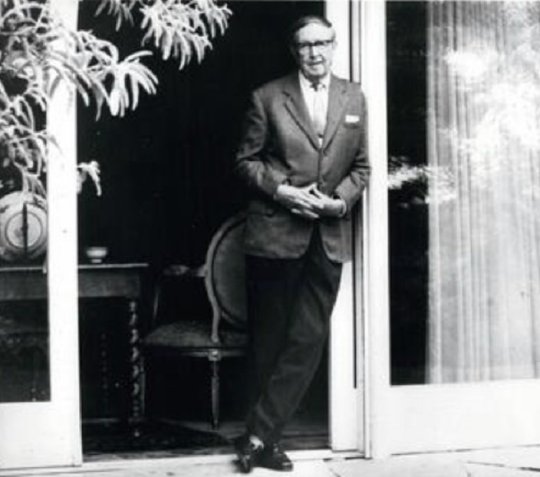

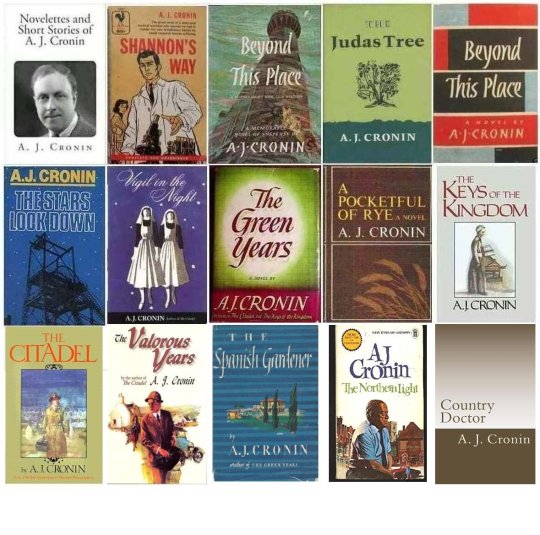
19th July 1896 saw the birth of AJ Cronin, the Scottish novelist and doctor.
For one short period Archibald Joseph Cronin was the highest-earning novelist in the world, outselling even Agatha Christie, and he is credited with encouraging the foundation of the National Health Service.
Born as Archibald Joseph Cronin in Cardross, Dumbartonshire, A J lost his father when he was young to tuberculosis and the family moved to Dumbarton, where he was educated at the Academy , before they moved again to Yorkhill, Glasgow and he attended St Aloysius' College. He was a fine athlete as well as an outstanding student; going on to study at Glasgow University qualifying in medicine at with top honours.
He worked at the Rotunda, Dublin, and on the Clyde before moving to Tredegar in Wales. He was a Medical Inspector of Mines, and was involved in the mining disaster at Ystfad colliery in which 38 miners drowned, and drew on these experiences in his writing. He moved on to Harley Street in London and finally established a very successful practice at 152 Westbourne Grove in Notting Hill, west London, where he practised until 1930.
Cronin’s writing career began when he was given six month’s bed rest for a digestive complaint. While convalescing from an attack of gastric ulcers on a lonely farm in the Highlands, he wrote Hatter’s Castle in 1931, about a Scottish hatmaker obsessed with the idea of his noble birth. It became a best seller. In the United States, a reviewer for The New York Times found it a work of a novelist “destined for the seats of the mighty.”
After the success he enjoyed with his first novel Cronin devoted himself full-time to writing. In 1935, he wrote The Stars Look Down, the story of a North England mining community that quickly captured attention. While The Times of London said the author had “a bent for melodrama,”
The Citadel drew on Mr. Cronin’s own experiences. It was the story of a young Scottish doctor in a Welsh mining village who sets up a fashionable practice in London and realizes the values of the life he had abandoned. It was made into a film starring Robert Donut.
The New York Times found him “uncannily like Dickens.” In 1940, the book was made into a highly praised film directed by Carol Reed for M-G-M.
The Citadel again drew on Mr. Cronin’s own experiences. It was the story of a young Scottish doctor in a Welsh mining village who sets up a fashionable practice in London and realizes the values of the life he had abandoned. Agaon it was made into a film starring Robert Donut. The Citadel did not go down well with the medical profession and Cronin made enemies in the medical profession, there was a concerted effort by one group of specialists to get The Citadel banned.
When The Keys of the Kingdom was published in 1941, it passed the half-million mark in sales and was a Book-of-the-Month Club selection. The hero of the novel was a self-sacrificing Catholic priest sent by his superiors into long service as a missionary in China.
Arguably Cronins most well known work, at least here at home, is ‘Dr. Finlay’s Casebook, about a pair of Scottish doctors sharing a practice. It became one of the longest-running British television series. Dr Finlay practised in the fictional town of “Tannochbrae”. The first few episodes of the original TV series were filmed in Milgavie, filming moved to Callander. The 90’s reboot was filmed in Auchtermuchty, Fife. But I hope I have demonstrated in this post that A J Cronin was not just all about Dr Finlay, which he didn’t start writing until 1952 by which time he had over 20 works published and was a very well established author.
By 1958, the total sales of his books in the United States alone had passed the seven million!
There have been numerous adaptations of his works made into Film and television series. The Citadel alone has been made into a Film once and a TV mini-series 4 times, the latest being in 2003 in Italy. Doctor Finlay has seen two TV adaptations through the years
A J Cronin died at the age of 84 in a clinic in the village of Glion, near Montreux, Switzerland, where he had lived for the last 25 years of his life. He is buried in Cimetière de La Tour-de-Peilz, La Tour-de-Peilz.
Cronin may have spent many years away from Scotland, but oor country was always in his heart and thoughts, I love this quote from him;
“Although I have travelled the world over I must say in all sincerity that my heart belongs to Dumbarton… In my study there is a beautiful 17th century coloured print of the Rock… I even follow with great fervour the fortunes of the Dumbarton football team.”
3 notes
·
View notes
Text



The Prince of Wales visits the Gresford Colliery Disaster memorial to mark St David's Day, in Wrexham, Wales -March 1st 2024.
#prince william#prince of wales#british royal family#england#2024#march 2024#st david's day#st david's day 2024#wales#wales 2024#the wales#my edit
39 notes
·
View notes
Video
Great Central Railway Loughborough Leicestershire 1st October 2023 por loose_grip_99
Por Flickr:
The other Gala visitor is Great Western Collett 5700 class pannier tank 0-6-0PT 7714 from the Severn Valley Railway. Seen here in front of the shed alongside BR Standard 2 2-6-0n 78018. 7714 was built in 1930 under contract by Kerr Stuart & Co. of Stoke & was one of the last locomotives produced by that manufacturer, which was wound up later that year. 7714 was sold to the NCB in 1959 for use at their Penallta Colliery near Rhymney in South Wales & purchase by the SVR took place in 1973. Shed code 6C was Croes Newydd from 1963-67 & Sub-sheds Bala (to 1965), Penmaenpool (to 1965).
2 notes
·
View notes